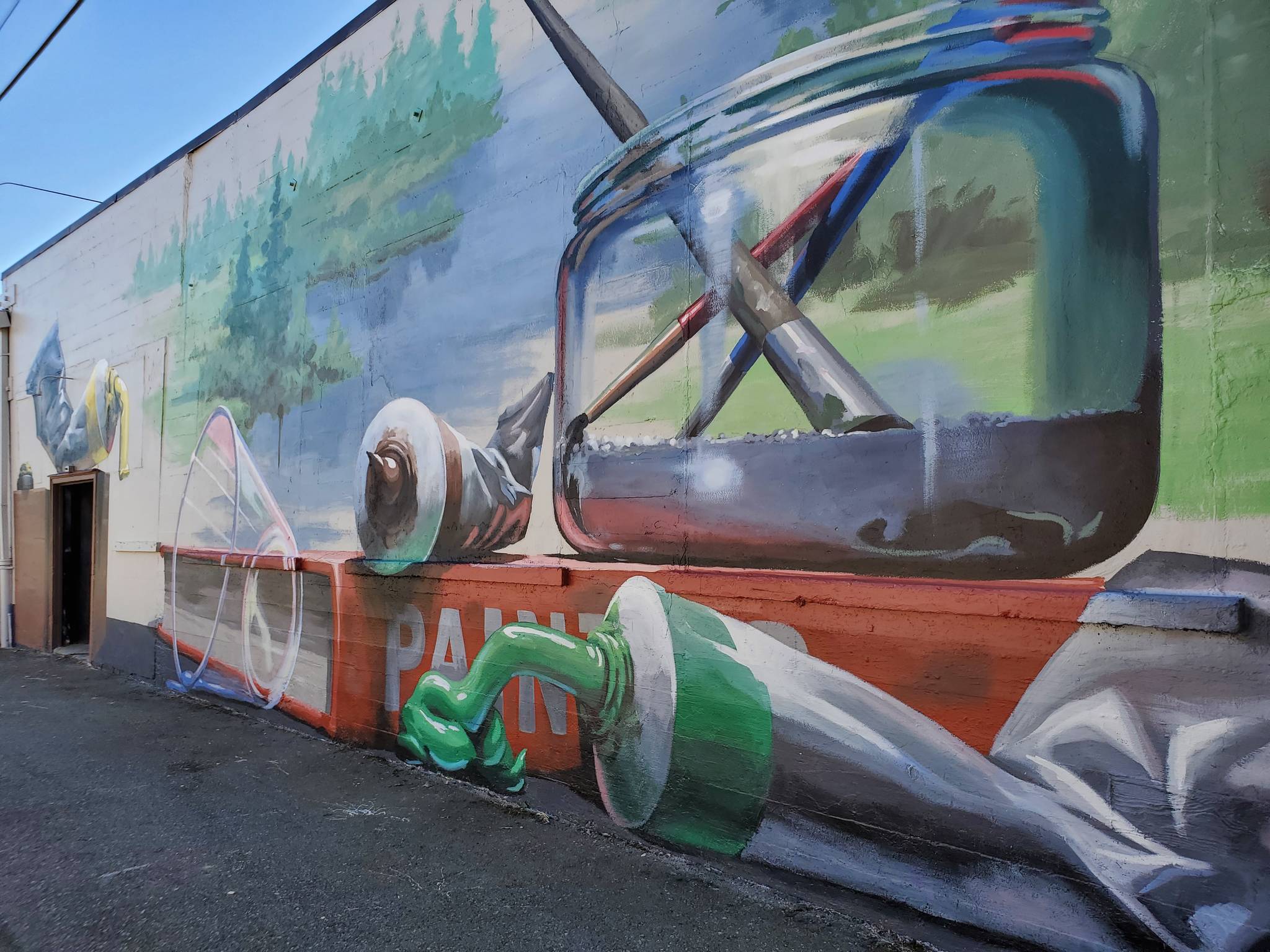Grey, even ugly.
Who’d disagree?
After all, it’s a safe bet no one has ever gawked at the alley between the Auburn Avenue Theater and the future Arts and Culture Center, or turned to the soul next to them and uttered the words “Wow, lookee there, ain’t that something!?”
But they may soon.
Plans have been on the back burner since 2017 to take the under-used alley and turn it into space for creativity, vibrancy, and cultural connectivity. The plans are now on the move.
Auburn Arts Alley, they call it.
Now, three years in, the project, which calls for lighting, seating, public art, space for temporary or “rotating” art and performances in addition to elements inspired by a local artist in collaboration with the Muckleshoot Tribe, is about halfway through construction, thanks to grants and partnerships with 4-Culture and the tribe.
The project first made news in 2017 when the University of Washington chose the cities of Auburn and Tacoma to be part of its Livable Cities project. The city submitted three projects, but the one that caught the eye of landscape architect students Allison Ong, Sylvia Janicki, and Jack Alderman was this homely alley.
Their first renderings offered custom-fabricated benches, artistically-altered pavers with poetry from local artists, daytime and evening activations with events and programming, food trucks, a low stage or raised platform around the rear of the Arts and Culture Center to provide a place for performances, and a raised seating area to accommodate other activities.
“It was their work and their leadership in landscape architecture and urban design that made a complete difference in having them look at it through the eyes of a young 20-year-old versus the eyes of us older, active adults,” said Daryl Faber, director of Auburn’s Arts, Parks and Recreation Department.
But their initial alleyway redesign plans generated cost estimates at over $500,000, Faber said.
But certain city officials wouldn’t let it go, so they scratched their heads, asking themselves who Auburn could partner with to make such a thing happen.
“The Livable Cities acted as sort of a launching pad for this vision to create creative and cultural energy in the arts and culture center and the alley next to it,” said Allison Hyde, Arts Program coordinator for Arts, Parks and Recreation.
The city submitted a successful application for a $20,000 grant via 4Culture’s Creative Consultancy program for the future Arts and Culture Center and the alleyway.
What came of that was a match between the city and local artist Kathleen Fruge Brown, who, in short order, submitted a formal proposal for grant consideration, suggested an undulating, curved, concrete wall with inlaid mosaics — a speciality of hers — and the stage earlier presented in the Livable Cities design.
Fruge Brown also worked with Willard Bill Jr., creative director for the Muckleshoot Tribe, and with local artist, weaver and teacher Gale White Eagle to incorporate her weavings and those of other Coast Salish basketry designs into the project.
At that, the city reached out to the community to hear what residents thought. From a community-shared Pinterest idea board to a widely-distributed email survey and in-person stakeholder meetings, the public input process helped define and refine the project goals.
Turns out, what the public wanted was lighting, seating, public art, temporary or “rotating” art and performances. Above all, the conversations revealed a hunger for more visual expressions of diversity, a thirst to see their own culture and history embodied in the public space.
Fruge Brown’s first rendering showed bench seating, mosaic inlaid tiles and the stage mentioned above.
For further inspiration, she turned to the Muckleshoot Tribe.
She based the resulting series of mosaics on traditional and contemporary weaving and inlaid into a concrete bench many of White Eagle’s designs and other Coast Salish weaving and basketry designs.
The concrete bench shows cast-in text of the Muckleshoot motto, “I am alive and strong” translated from Whultshootseed into the 10 other languages most commonly spoken in the Auburn community.
Fruge Brown also designed overhead lighting, with figures for the lighting created by the community during AuburnFest in 2019. The designs are intended to be lasercut in the MakerSpace with community member participation.
Local artist Will Schlough has designed and painted a dynamic wall mural with painting on the alleyway surfacing. Once the overlay is finished, Schlough will add his final rendering.


